As I have stated before, Spring rocks. Actually, it flowers! That’s one of the reasons I like it so much. So I thought I would share some tidbits about some of the lovely spring ephemerals that grace Pennsylvania forest. With the unofficial start of summer in only a few days, head outside and see if you can catch a glimpse before they close shop for another year.
Spring ephemerals are perennial woodland wildflowers which develop stems, leaves, and flowers each in the spring, quickly bloom and produce seed. Then die back and hang out underground until next spring. This strategy allows small herbaceous plants to take advantage of sunlight hitting the forest floor before canopy leafout. Like that introverted friend that shows at the party early to make an appearance and leaves before the crowd get there.
Carolina Springbeauty (Claytonia caroliniana)
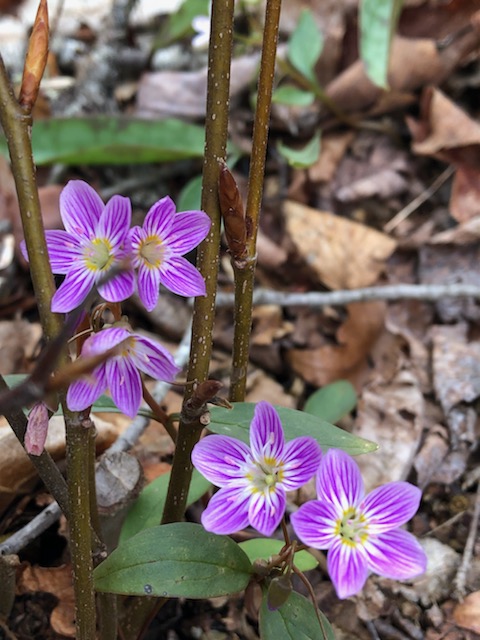
The Carolina Springbeauty is a tiny plant, generally under six inches in height. It is one of the earliest plants to flower with that leavesare medium green, about one to three inches long and about 3/4 inch wide and delicate flowers about half an inch wide with five pink or white petals.
The roots are starchy and can be eaten raw or cooled like potatoes for which several native peoples are said to have used them. Likewise, chipmunks and white-footed mice do the same.
Trout lily (Erythronium americanum)
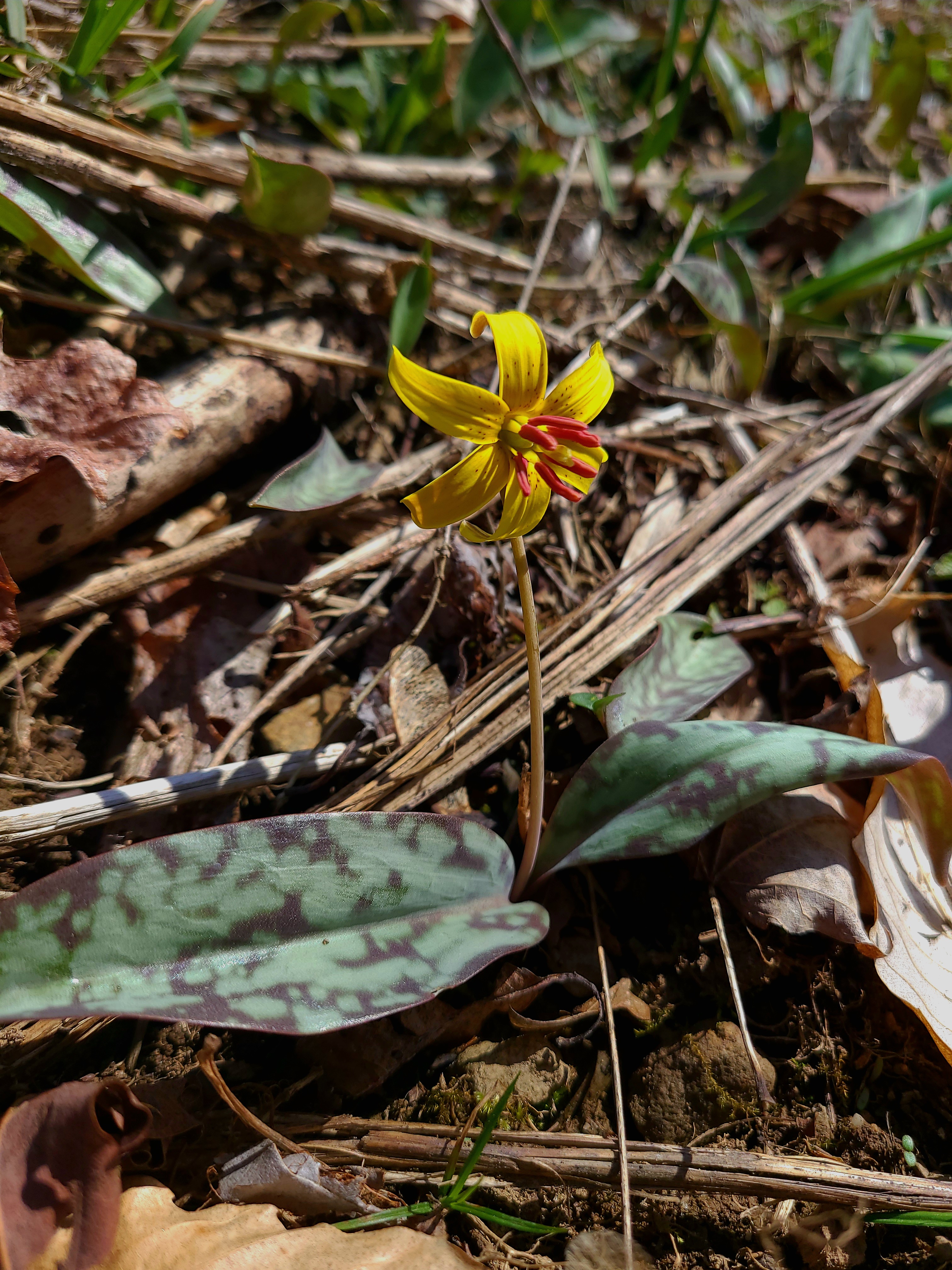
A yellow trout lily produces an erect flower stalk with a nodding, bisexual flower with 6 recurved, yellow, lanceolate tepals. Non-flowering plants grow a single leaf whereas flowering plants grow 2 basal leaves. The trout lily does not flower for the first 4 to 7 years of its life. It grows in colonies and in any given colony, only 0.5% will have flowers. Some of these colonies have been aged at over 300 years old! They definitely play the long game.
They aren’t very good at sexual reproduction with only 10% of pollinated flowers producing seeds which are dispersed by ants. Plants in a colony will reproduce asexually via a “dropper.” If you are interested in knowing more about plant sex, or lack thereof, Google is your friend.
Trout lilies have limited use as food or medicinal value. Perhaps because all part are strongly emetic (cause vomiting) and contact with skim of the corms has been known to cause dermatitis. As for wildlife, they are too tiny for deer to bother to find, but bears will dig up the corms to eat. However, they do appear to be a mainstay of the chipmunk diet according to some research.
Squirrel Corn (Dicentra canadensis)
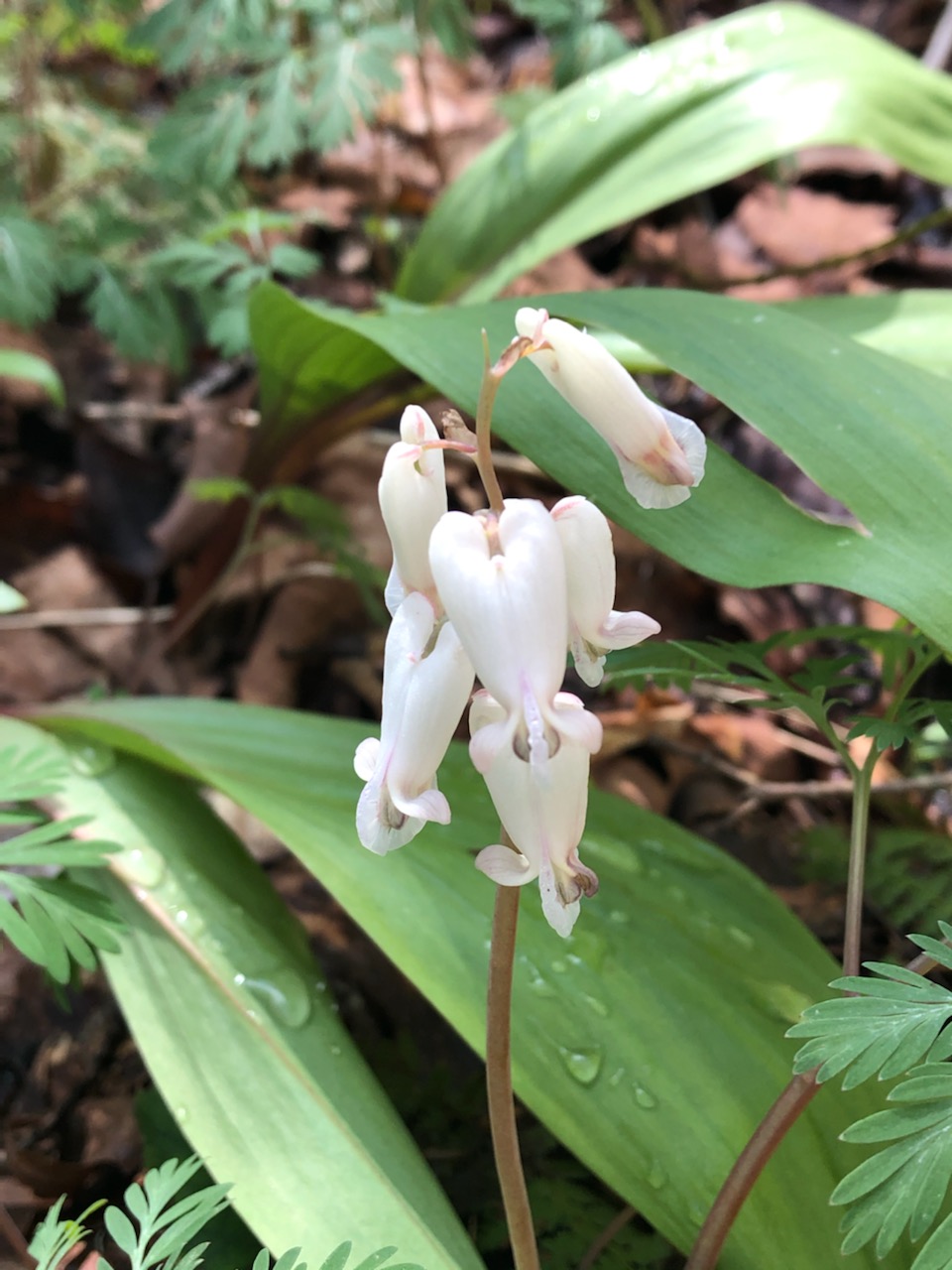
This tiny (only 10 inches tall) plant with white(-ish) flowers less than an inch long is an important food source for pollinators active this time of year – nesting queen bumblebees! After pollination and seed production, ants munch on the fleshy outer seed layer and distribute them.
However unless you are an insect, it is not recommended you snack on these. Squirrel corn is in the poppy family, Papaveraceae. The plants contain isoquinoline alkaloid compounds, which impact the central nervous system; the resulting tremors, convulsions, and paralysis from ingesting the plant gives it its other name, staggerweed. It is also very similar to Dutchman’s breeches (Dicentra cucullaria) with which it often grows side-by-side.
Jack-in-The-Pulpit (Arisaema triphyllum)
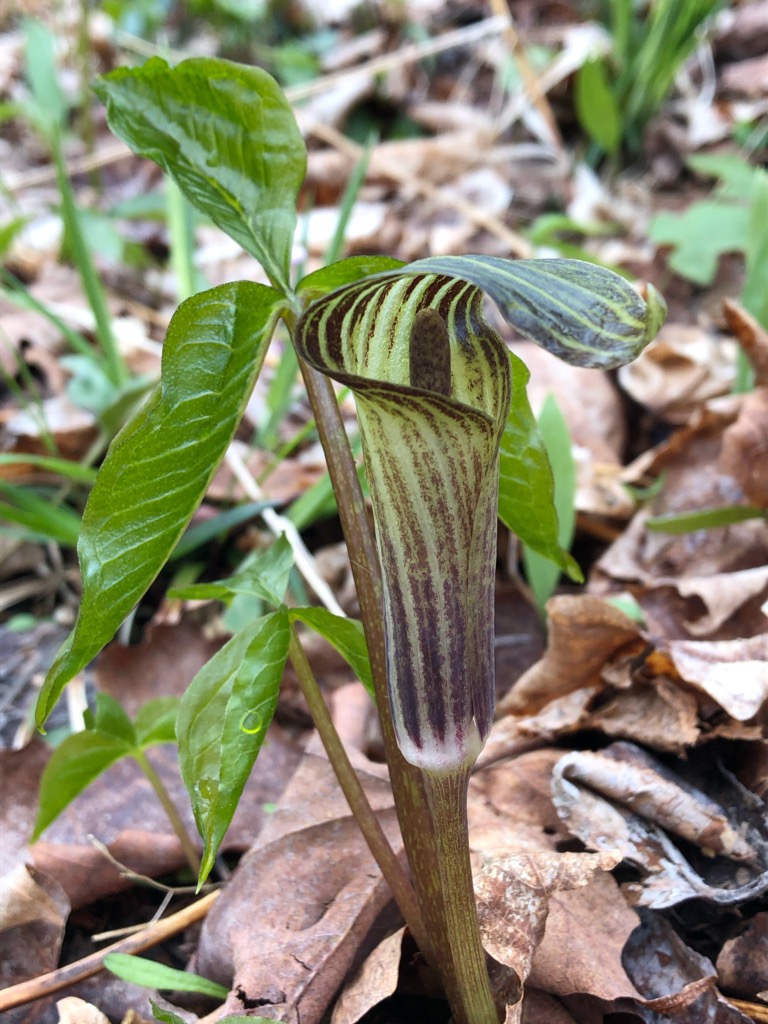
Jack-in-the-Pulpit grows up to two feet tall. In the south, they reach Jurassic size of almost 4 feet! Flowers are pollinated by small flies and bloom from March through June depending on locale. Its unusual flower doesn’t look much like a flower but it’s berries make up for that with their bright red color. Birds and rodents find them super yummy but it’s best for us to look and not touch.
The leaves and fruits contain calcium oxalate that can irritate the skin and is poisonous if ingested. However, if cooked, it can be eaten like a root vegetable with calcium oxalate crystals giving it a peppery flavor. I’ll pass and take their word for it. Native peoples did prepare the root for treatment of sore eyes and other maladies.
Trilliums (Trillium spp)
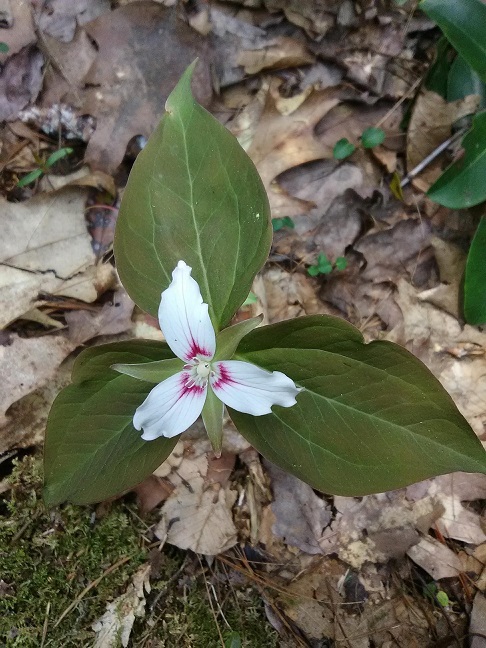
Trilliums are perhaps the most famous spring ephemeral with 35 species in eastern North America. There are painted trilliums (Trillium undulatum); great white trilliums (Trillium grandiflorum); and stinking williams (Trillium erectum) – yes they smell bad.
Many recognize them with their three petals and three sepals but there is much variety in the trillium family. Trilliums are generally divided into two major groups: the pedicellate and sessile trilliums. Check out bloody butchers, twisted trilliums, and yellow trilliums if you get the chance! Ants disperse the seeds of trilliums and they are a known favorite food of deer.
Native peoples used the grated root of Trillium grandiflorum as a poultice for eye swelling and as a tea to relieve cramping during menstruation.
Pink lady’s slipper or moccasin flower (Cypripedium acaule)
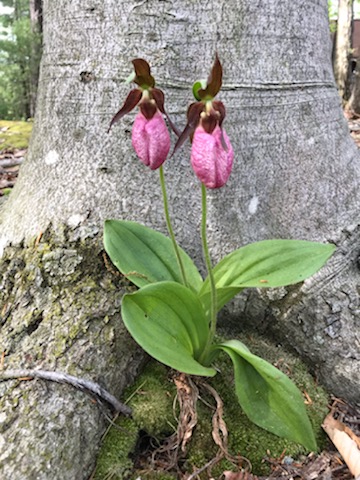
Found from Maine to Georgia, it’s one of 50 species of orchids that grow in PA. One pink bloom grows atop of a 6- to 15-inch-tall leafless stem, which is nestled between two broad basil leaves. The flower is unique and easy to ID.
Bees enter the flower by squeezing between the petals and can only escape by crawling over the pollen-bearing parts. But the pink pouch contains no nectar reward, so some bees never enter another flower which may contribute to the plant’s low rate of seed production.
Add to that its symbiotic root relationship with a Rhizoctonia fungus. The very tiny seeds have no food and require the fungus to open the seed and attach. Once attached the fungus provides food for the germinating seed. All this leads to a long life cycle. They also have very specific habitat requirements which include acidic soils of 4.5 pH.
Historically, the root of lady’s slipper was used as a remedy for toothaches, nervousness and muscle spasms, and as an aphrodisiac. No one should find this shocking.
Canada Mayflower (Maianthemum canadense)
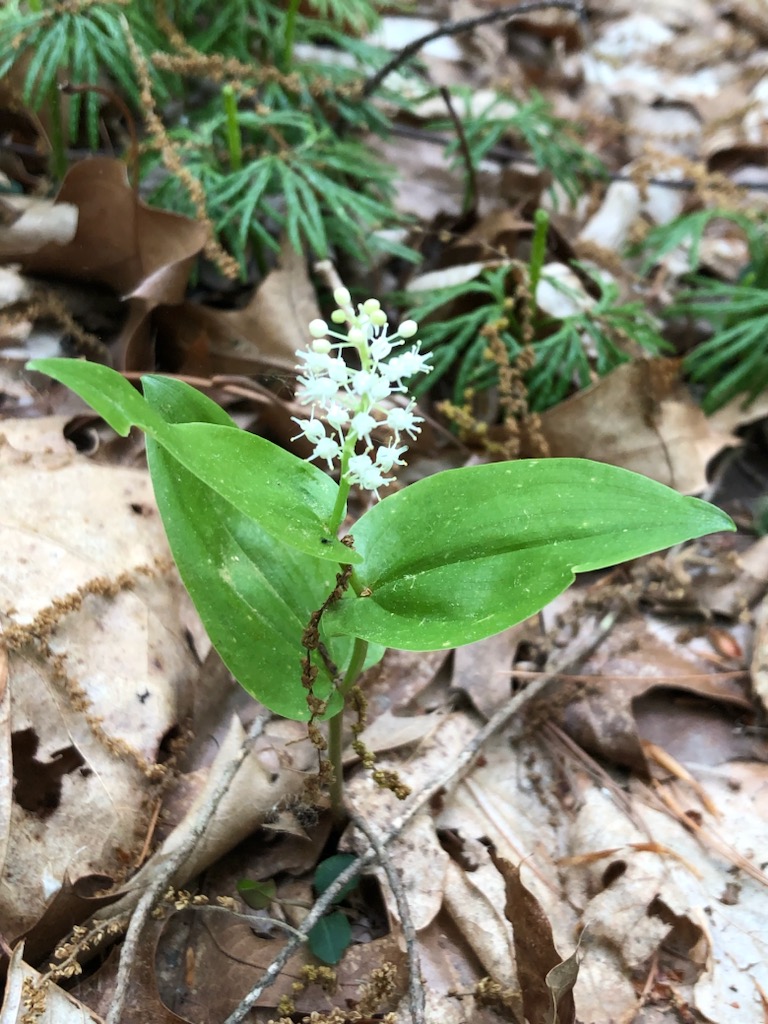
Canada Mayflower is a low-growing plant (<6 inches tall) with a zigzagging stem having 1-3 shiny leaves. It spreads by rhizomes and often forms carpet-like colonies. They produce clusters of tiny white fragrant flowers on delicate stems. The flowers arrive with the fawns blooming in late May and early June. They form berries that turn from green to mottled dull red to red in the fall.
There are no real edible uses and medicinal uses are limited withs some reports of headache, sore throat or kidney ailment treatment. Berries are eaten by birds and small mammals.
Sure these flowers are beautiful and that should be enough to justify their existence in the world. But for some, their value is measured in their usefulness. Do you like deer? Well, deer need spring ephemerals. Canada Mayflower for example is a forb and can make up to 25% of a deer’s spring diet. It’s high in phosphorus (P) and potassium (K) which are essential nutrients for ungulates. In fact, spring ephemerals can suck up massive quantities of potassium.
We have shown that where they grow is just as important as the plants themselves because the mineral content varies by species and location. Spring ephemerals function as temporary storage of nitrogen (N), phosphorus (P), and potassium (K) protecting soils from leaching while simultaneously making them available to deer who need them to grow things like fawns and antlers.
So you better invite those forest introverts to the party and hope they show up!
-Jeannine Fleegle
Wildlife Biologist
PA Game Commission